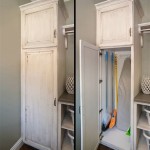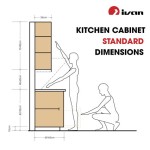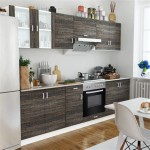What to Display on a Kitchen Island: Balancing Function and Aesthetics
The kitchen island has evolved from a simple workspace into a multifaceted hub within the modern home. It provides additional counter space, storage, and often serves as a gathering spot for family and friends. Consequently, the surface of the kitchen island becomes prime real estate for displaying items that are both functional and aesthetically pleasing. Selecting what to display requires careful consideration of the island’s purpose within the kitchen and the overall style of the home.
The goal is to create a curated arrangement that enhances the kitchen's visual appeal without compromising its functionality. Overcrowding the island leads to a cluttered appearance and hinders its usability. Conversely, leaving the island completely bare can make the space feel sterile and uninviting. Striking a balance between these two extremes is key to creating a visually appealing and practical kitchen island display.
Several factors should influence the selection of displayed items. These include the size of the island, the kitchen's overall design style (e.g., modern, traditional, farmhouse), the frequency with which the island is used for food preparation or dining, and the storage capacity available elsewhere in the kitchen. Considering these elements will help to determine what items are most suitable for display and how they can be arranged to maximize both function and aesthetics.
Functional Items as Decorative Accents
One approach to decorating a kitchen island is to incorporate functional items that also serve as decorative accents. This strategy allows for practicality without sacrificing style. Carefully selected kitchen tools, storage containers, and serving pieces can be elevated from mere necessities to visually appealing focal points.
A popular option is to display a collection of wooden cutting boards in varying shapes and sizes. These can be leaned against a backsplash or arranged on a decorative stand. The natural wood tones add warmth and texture to the kitchen, while also providing readily accessible boards for food preparation. To maintain hygiene, ensure cutting boards are properly cleaned and sanitized after each use.
Another functional yet decorative option is to showcase a selection of attractive storage containers. Glass jars filled with colorful pasta shapes, dried beans, or grains can add visual interest and keep pantry staples easily accessible. Canisters displaying coffee beans, tea bags, or spices can also be arranged for both convenience and aesthetic appeal. Choose containers that complement the kitchen's color scheme and overall design style.
If the kitchen island includes a sink, consider displaying a stylish soap dispenser and hand lotion set. Select products with attractive packaging that coordinates with the surrounding décor. A small bud vase with fresh flowers or greenery can also add a touch of freshness and fragrance to the area. Opt for durable, water-resistant materials for items placed near the sink to prevent damage from splashes and spills.
For islands used for frequent food preparation, consider keeping essential cooking tools within easy reach. A utensil holder containing wooden spoons, spatulas, and whisks can be both functional and aesthetically pleasing. Choose a holder that complements the kitchen's style and opt for utensils with attractive handles. Ensuring these tools are clean and well-maintained is critical for both hygiene and visual appeal.
Displaying cookbooks is another way to combine function and decoration. A stack of favorite cookbooks, perhaps arranged by color or cuisine, can add a personal touch to the kitchen. Consider using a decorative bookend or stand to keep the books organized and prevent them from toppling over. Select cookbooks with visually appealing covers to enhance the overall display.
Creating Visual Interest with Decorative Objects
In addition to functional items, incorporating purely decorative objects can add personality and visual interest to a kitchen island display. These items can reflect the homeowner's personal style and create a more welcoming and inviting atmosphere. The key is to choose items that complement the kitchen's overall aesthetic and avoid overcrowding the space.
A centerpiece is a common and effective way to create a focal point on a kitchen island. This could be a large bowl filled with seasonal fruit, a sculptural vase, or a collection of candles. The centerpiece should be proportionate to the size of the island and should not obstruct the view across the space. Consider the height of the centerpiece to ensure it does not interfere with conversations or food preparation activities.
Plants and flowers are excellent choices for adding life and color to a kitchen island display. A potted herb garden can provide fresh ingredients for cooking, while also adding a touch of greenery to the space. Alternatively, a vase of fresh-cut flowers can instantly brighten up the kitchen. Choose plants and flowers that are appropriate for the kitchen's lighting conditions and that complement the overall décor.
Decorative trays can be used to group smaller items together and create a more cohesive display. A tray can hold candles, small vases, or decorative objects, creating a focal point and preventing the items from appearing scattered. Choose trays that complement the kitchen's style and color scheme. Materials such as wood, metal, or ceramic can all be effective choices.
Sculptural objects, such as abstract figurines or geometric shapes, can add a touch of sophistication to a kitchen island display. Choose objects that are proportionate to the size of the island and that complement the overall design style. Metal, glass, or ceramic sculptures can all be effective choices, depending on the kitchen's aesthetic.
Artwork can also be incorporated into a kitchen island display. A small framed print or photograph can add a personal touch to the space. Alternatively, a decorative tile or ceramic plate can be displayed on an easel. Choose artwork that complements the kitchen's color scheme and overall design style.
Illumination and Lighting Placement
Lighting plays a crucial role in enhancing the visual appeal of a kitchen island display and creating a warm and inviting atmosphere. Carefully chosen lighting fixtures and strategic placement can draw attention to the displayed items and improve the overall ambiance of the kitchen.
Pendant lights are a popular choice for illuminating kitchen islands. These lights hang from the ceiling and provide focused illumination for food preparation or dining. Choose pendant lights that complement the kitchen's style and that are appropriately sized for the island. Consider the number of pendants needed to provide adequate light coverage without overcrowding the space. The height of the pendants should be adjusted to avoid obstructing views or creating glare.
Recessed lighting can also be used to illuminate a kitchen island. These lights are installed flush with the ceiling and provide a more subtle and understated form of illumination. Recessed lighting can be used in conjunction with pendant lights to create a layered lighting scheme. Position the recessed lights strategically to highlight specific areas of the island, such as the countertop or the sink.
Under-cabinet lighting can be used to enhance the visibility of items displayed near the backsplash. This type of lighting is installed beneath the upper cabinets and provides focused illumination for food preparation or cleaning. Under-cabinet lighting can also be used to highlight decorative tiles or other backsplash features.
Table lamps can be used to add a touch of warmth and ambiance to a kitchen island display. A small table lamp can be placed on one end of the island to provide a soft, diffused light. Choose a lamp with a shade that complements the kitchen's color scheme and that is appropriately sized for the space.
Candles can also be used to create a warm and inviting atmosphere. Arrange a collection of candles on a decorative tray or stand to create a focal point. Choose candles with scents that complement the kitchen's overall aroma, such as citrus or vanilla. Be sure to exercise caution when using candles and never leave them unattended.
In conclusion, determining what to display on a kitchen island involves careful consideration of functionality, aesthetics, and lighting. The aim is to create a curated arrangement that is both visually appealing and practical, contributing to the overall ambiance and utility of the kitchen.

Island Paradise Four Ways To Style Your Kitchen Nell Hill S

Kitchen Island Display Cabinet A Storied Style

Decorating Your Kitchen Island 7 Easy Style Ideas The Zhush

Kitchen Island Display Cabinet A Storied Style

Trendy Display 50 Kitchen Islands With Open Shelving Decoist

Island Display Cabinets Design Ideas

5 Kitchen Island Decorating Ideas To Upgrade Your Style The Lakeside Collection

Ideas For Kitchen Counter Styling Decor Gold Designs

Kitchen Island Guide With Stylish Design Ideas Oppein

Island With Glass Display Cabinets Cottage Kitchen
Related Posts








